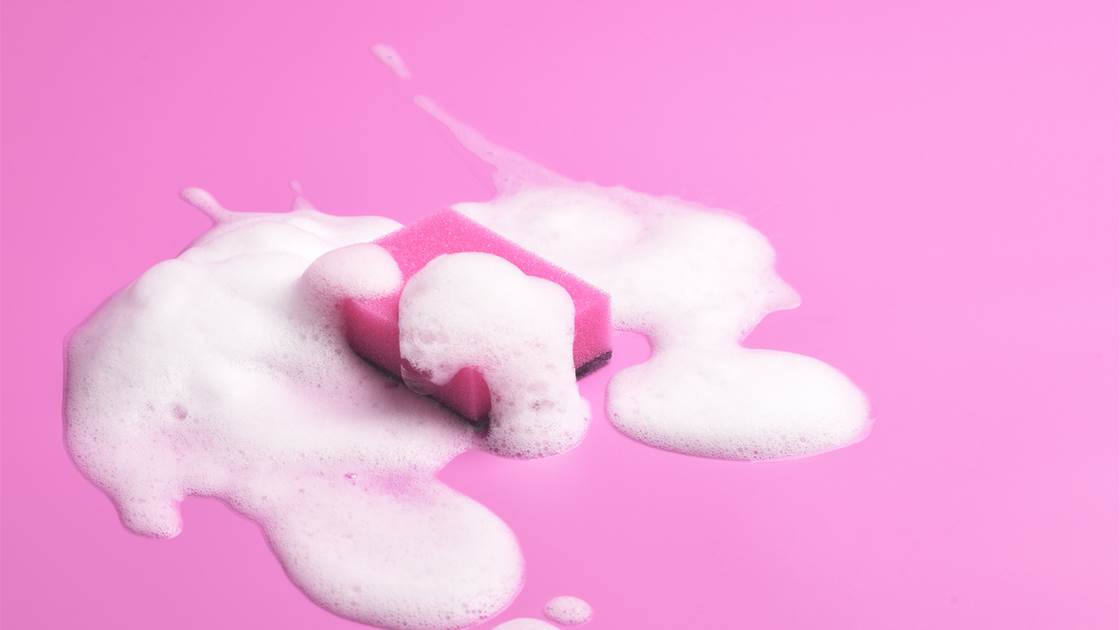If you happen to notice a white hue coating your tongue or a few white patches here and there, don’t panic. This condition, known as white tongue, is usually nothing to worry about. But in rare cases, this symptom can warn of a more serious condition like an infection or early oral cancer.
So what even is white tongue, and what can you do about it? We’ve consulted with experts to explain all the possible reasons for your white tongue, how to treat the condition, and when to see a doctor to rule out anything serious.
What is white tongue?
Our tongue has these finger-like projections called papillae, explains dentist Dr Parul Dua Makkar. When those papillae get inflamed for some reason, “it causes food, bacteria or other debris to get trapped in the papillae, and that can give your tongue that white appearance,” says Makkar. She adds that this condition can also lead to bad breath, bad taste, redness or discomfort.
What causes white tongue?
White tongue is often related to poor oral hygiene, explains dentist Dr Jeffrey Sulitzer. “Causes for this condition include inadequate brushing and flossing, dry mouth, dehydration, tobacco and alcohol use, among other issues,” he explains.
To ensure you are brushing and flossing more effectively, Sulitzer suggests using an electric toothbrush and water flosser. “For brushing, I recommend that you brush your teeth after every meal to prevent harmful bacteria and plaque buildup. Be sure to brush your tongue and rinse the roof of your mouth.”
Flossing once or twice a day is also a critical part of your oral health routine to remove bacteria that get stuck between teeth, says Sulitzer. For those hesitant about traditional flossers, consider water flossers that are usually more comfortable and easier than traditional string floss.
In addition to poor oral hygiene, there are many habits or conditions that could bring about a white tongue appearance. According to Makkar, here are some of the usual suspects:
- Poor brushing and flossing
- Not keeping your tongue clean
- Breathing through your mouth
- Dehydration
- Fever
- Smoking or tobacco use
- Alcohol use
- Eating lots of soft foods
- Irritation, such as from sharp edges on chipped teeth or dental appliances (braces, dentures, etc.)
There are also some medical conditions that can trigger white patches or coating on your tongue. According to Makkar, these specific health conditions could be responsible for your white appearance:
Infection: Some medications, such as antibiotics, can lead to a yeast infection in your mouth. This can cause your tongue to have a white appearance. You can also develop a fungal infection if you are a person who wears dentures long-term.
Leukoplakia: This condition causes white patches to form on the inside of your cheeks, along your gums, and sometimes on your tongue. You can get leukoplakia if you smoke or chew tobacco. Excess alcohol use is another cause. The white patches are usually harmless. But in rare cases, leukoplakia can develop into oral cancer.
Lichen planus: Lichen planus is an auto-immune disorder that can have a white patch appearance on your tongue. Along with the white tongue, your gums may be sore. You might also have sores along the inside lining of your mouth.
Geographic tongue: This condition is completely normal and usually nothing to worry about. For people who have a geographic tongue, they will often see both red and white patches in a pattern on their tongue. Some patients also experience sensitivity to spicy or acidic foods, but otherwise, many people don’t have any symptoms at all.
Syphilis: This sexually transmitted infection can cause sores in your mouth. If syphilis isn’t treated, white patches called syphilitic leukoplakia can form on your tongue.
Hypothyroidism: If your thyroid gland is underperforming, hypothyroidism can manifest itself in your mouth in many ways. Some of which are taste disorders, swollen tongue, and yes, white tongue.
Oral cancer: White patches can be an early sign of oral or mouth cancers. Some other notable symptoms of mouth cancer can be a lip or mouth sore that doesn't heal, a white or reddish patch on the inside of your mouth, loose teeth, growths or lumps inside your mouth, mouth pain, ear pain, or difficulty swallowing.
How can you treat white tongue?
Since a white tongue is likely the culprit of poor oral care, you may be able to remove the white coating by brushing it and drinking plenty of water to flush the excess bacteria from your mouth, says Sulitzer. In general, Makkar suggests to “keep the area clean, brush, and/or use a tongue scraper.” However, Sulitzer notes, if the condition does not improve, you should visit your dentist to determine the next steps.
If your white tongue is caused by irritation from ill-fitted dental appliances, such as dentures or braces, the first priority is to have them adjusted by your dentist or orthodontist, says Makkar.
However, if your white tongue is caused by a medical condition, the solution won’t be as simple and straight-forward. You’ll need to see a specialist to determine the cause of your white tongue before treating it.
For fungal infections, you will likely get an antifungal medication prescribed to you by your doctor, says Makkar. “If it’s determined that you have syphilis, your doctor will likely prescribe you with a course of antibiotics. If you have lichen planus and the white patches become painful, your doctor will likely prescribe steroids. And for hypothyroidism, there are medications that can be prescribed to counteract the effects of the underperforming thyroid.”
Oral cancer can only be diagnosed through a biopsy. If it is determined that you have oral cancer, you will likely be met with a multi-specialty treatment plan, says Makkar.
How can you prevent white tongue?
The most important things you can do to prevent white tongue is to “maintain oral hygiene, stay hydrated, and have a balanced diet,” says Makkar. She adds that you should avoid sticking to only soft foods and make sure you’re eating a nutritious, well-balanced meal for every meal.
To prevent a white tongue in the first place, Sulitzer says to “practice proper oral care by brushing at least twice a day, flossing each day, and using mouthwash.” Additionally, he adds that you should visit your dentist every six months for a regular checkup and cleaning, and do not use tobacco products.
When should I see a specialist?
The only way to diagnose your white tongue is to come in, get it biopsied and get it checked at the appropriate care provider, says Makkar. Once your white tongue has been diagnosed, “if it's been standing for more than two weeks, get in, get it diagnosed, and get the appropriate care.”
According to Makkar, here are some additional reasons to get your white tongue checked out ASAP:
- If you see the white patch or lesion getting bigger
- If the white patch or lesion is causing discomfort, or if it becomes painful in some way
- If there’s a white lesion that doesn’t rub off and its long-standing
- If the white patch or lesion not gone within two weeks
Usually a white lesion is nothing to worry about, it’s only if after two weeks or if the symptoms get worse or enlarged, or if there's any pain or discomfort moving the tongue or causing problems with normal use (eating and drinking and talking), that it becomes a problem, says Makkar. “That's when you need to get it checked out.”
Last, although some of us dread seeing the dentist, Makkar says it’s important to always go in for regular check ups and don’t wait, because your white tongue could mean something more.










